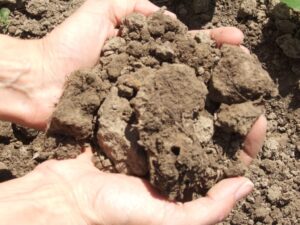
Humic Mine Personalities by NMS
Let’s start in the south and work our way north. Terlingua, TX has a vein that would be the southern end of the New Mexico
Having 25+ years of selecting varieties for my farm and 7+ years in seed dealership, my study on seed and variety comparisons have exponentially expanded my understanding of the choices we have to make. The 2 companies I represent provides my customers access to all traits and the majority of the genetic pools at all different price points. I take it upon myself to recommend seed varieties to utilize the traits and genetic potential to perform at the best input cost according to the farming practices and soil type. Each company has upline support / agronomic services for the grower.
Having personally observed many varieties in plots and in fields, my recommendations come proven for the SE Iowa region. Non-biased, reliable production trials such as F.I.R.S.T. have also supported recommendations.
Varieties winning trials in multiple locations indicates versatile, strong yield response to different soils, management, rainfalls and weather. Choose a variety that will get to canopy early with strong emergence & early vigor.
Variety characteristics summarize plant type, grain and yield potential in soil type. With various soil type adjustment to population and in-furrow fertility are considered. Soil should be around 30% moisture with 50 degreeF and warming for corn. Soybeans prefer dry soil and 40 degreeF and warming. When adding fertilizer, consider that it adds direct moisture and should be warmer than the soil, applied consistently.
Mechanical planting technology will dictate spacing, depth control, seed to soil contact/firming, and closing system to maintain a balance of moisture, air and soil. Maintenance and monitoring of these components should be considered frequently during the planting day.
The overall goal of all functions is to have even emergence of a variety that will perform its best in that particular soil, with the ability to intercept water, nutrients and sunlight in balanced fashion throughout the season.
Seed germination will be regulated, tested and reported on seed tags by reputable seed companies. Industry standards exist for corn to pass/fail (something like 80% at 70 degreesF). Certain varieties will achieve high rates at even colder temperatures. Considering we target a harvest population based on soil type, divide target by germ at the soil temp, and by mechanical efficiency to achieve desired stand. Even emergence could become challenged in cold, wet soils.
Seed size matching the planter capability and size consistency supports population and spacing.
Seed treatments have enhanced seedling vitality among soil-borne bacteria, fungus and insect threats. Biological treatments are added to enhance germination rates and early root development. Surefire Seed treatment by Ag Logics has served to increase yields comparable to starters with a low cost and efficiently applied to boxed or bulk seed.
We relate the seed to the variety characteristics. A small package of genetic potential to grow and yield. Further focus on soil type, drainage, and fertility should be matched to a seed variety that can exceed in that environment.
Some may say its a balance of offensive and defensive characteristics. A corn plant can throw a long ear and not completely fill it because of pollenating or insect feeding and still loose it when held by a short shank. Threats of drought or disease pressure will affect grain fill, test weight, and stalk health at harvest. Therefor, consider a plant’s stress response to management referred to as fungicide response, side dress (nitrogen, sulfur, and micros), or foliar feeding (humic and/or fulvic acid, small amounts of N-P-K, and micro nutrients based on leaf or soil sampling).

Let’s start in the south and work our way north. Terlingua, TX has a vein that would be the southern end of the New Mexico